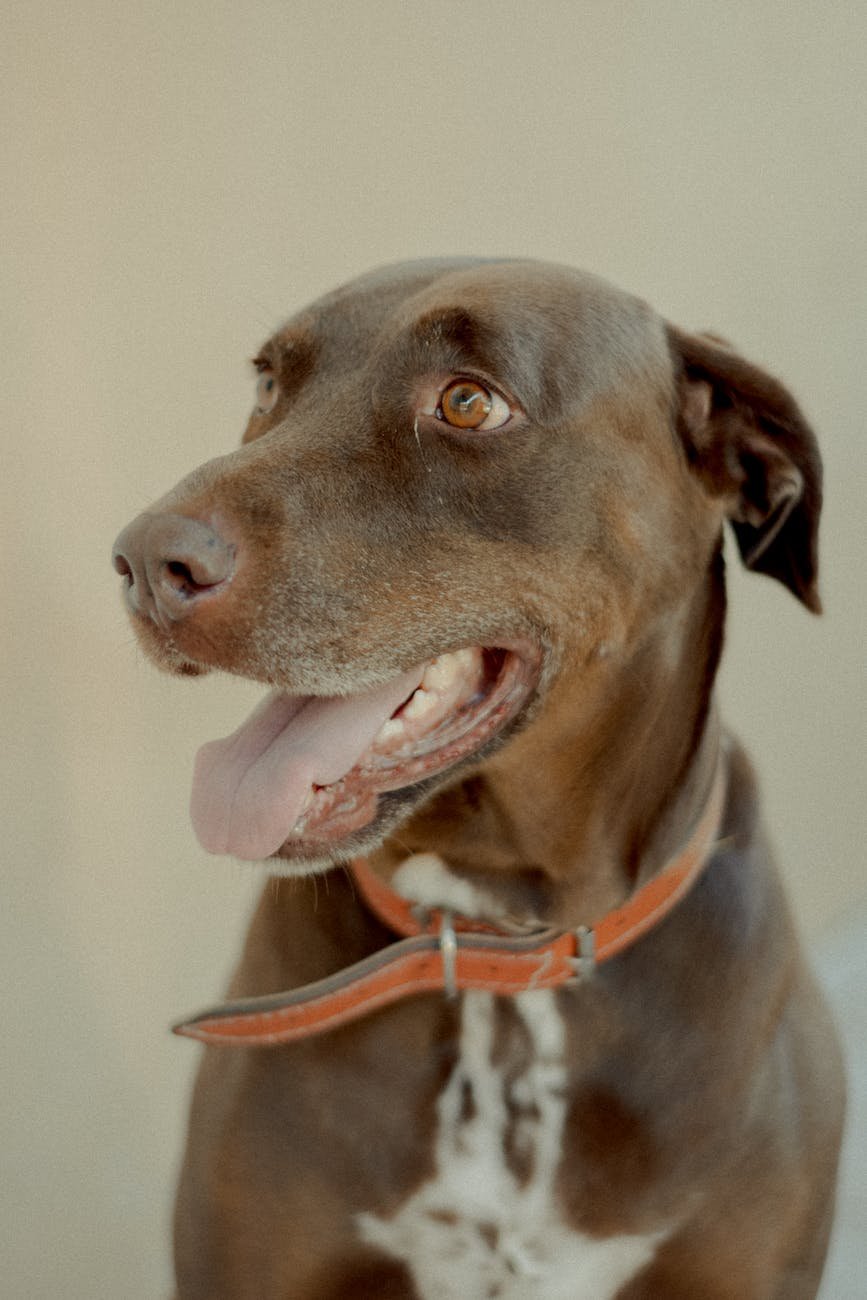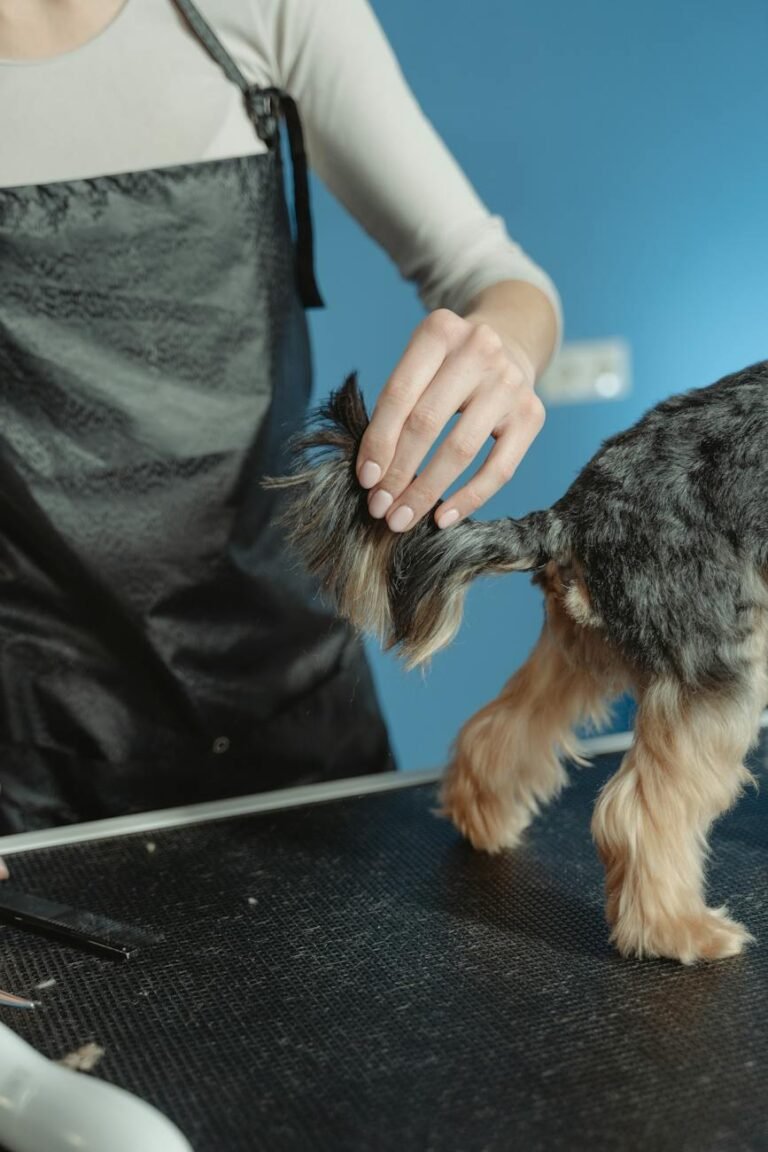Cracking the Code: Understanding Your Dogs Play Behavior
Understanding Dog Play Behavior
Play behavior is an essential aspect of a dog’s life, serving various purposes such as exercise, socialization, and mental stimulation. When it comes to understanding your pup’s play behavior, it’s crucial to recognize the importance of play and familiarize yourself with the different types of play dogs engage in.
The Importance of Play for Dogs
Play is a common behavior in domestic dogs that serves multiple purposes. It allows dogs to establish status hierarchies, release energy, foster social bonding, and simply have fun (CPT Training). It contributes to their physical fitness, cognitive development, and emotional well-being (Science Direct). Play also helps dogs develop social skills, improve coordination and problem-solving abilities, and reduce stress and anxiety (Science Direct). Understanding the significance of play allows you to provide enriching experiences for your furry friend.
Different Types of Dog Play
Dogs engage in various types of play behavior, each with its own characteristics and purposes. Recognizing these play styles can help you better understand your dog’s preferences and cater to their needs. Some common types of dog play include:
| Type of Play | Description |
|---|---|
| Locomotor Play | This type of play involves activities such as running, jumping, and chasing. It promotes physical fitness and allows dogs to expend energy. |
| Object Play | Dogs engage in object play when they interact with toys, balls, or other objects. It stimulates their mental faculties and provides entertainment. |
| Social Play | Social play involves interactions between dogs, such as chasing, wrestling, and play biting. It enhances social skills and strengthens social bonds. |
| Play Fighting | Dogs engage in play fighting to practice their physical coordination, learn bite inhibition, and establish boundaries. It is important to differentiate between play fighting and real aggression. |
Understanding the different types of play behavior allows you to engage with your dog in a manner that aligns with their natural inclinations. By observing their preferences and adapting play styles accordingly, you can create a stimulating and enjoyable experience for your pup.
To delve deeper into the intricacies of dog play behavior, it’s important to recognize the body language and signals dogs display during play and understand proper play etiquette. This knowledge will enable you to ensure that play remains friendly, consensual, and safe for all dogs involved.
Signs of Healthy Play Behavior
When observing your dog’s play behavior, it’s important to be able to recognize signs of healthy play. Understanding your pup’s body language and knowing proper play etiquette can help ensure that playtime remains enjoyable and safe for everyone involved.
Body Language and Signals
Healthy play behavior is often characterized by loose and relaxed bodies and faces. Dogs engaged in playful interactions will exhibit wagging tails, soft eyes, and open mouths. They may also perform play bows, which involve lowering the front of the body while keeping the rear end elevated. Play bows are a way for dogs to indicate that they want to play and invite other dogs to join in (Cesar’s Way).
Proper dog play includes dogs willingly making themselves vulnerable to their playmates. This can involve falling down, exposing their belly, or allowing themselves to be gently nipped without becoming agitated. These actions indicate that they trust and feel comfortable with their playmate (Preventive Vet).
Proper Play Etiquette
In addition to body language, proper play etiquette is crucial for maintaining a positive and safe play environment. Good playmates should switch roles throughout play, taking turns being on the bottom during wrestling or chase games. This allows for a balanced and fair play experience. Larger dogs may also self-handicap by making themselves smaller or lessening the intensity of play to match a smaller playmate (Preventive Vet).
Polite dog play includes frequent brief pauses to prevent play from escalating into a fight. These pauses allow dogs to manage their own energy levels and avoid becoming overly aroused. Pauses also provide an opportunity for dogs to check in with each other and ensure that both parties are still comfortable and enjoying the play session (Preventive Vet).
It’s important to note that dogs use their teeth during play, but proper bite inhibition is essential to keep play enjoyable and prevent any potential harm. Dogs learn bite inhibition from their littermates, parents, other non-related dogs, and humans. If a dog bites too hard during play, the other dog may yelp and stop the play, signaling that the bite was too intense. This feedback helps dogs learn to control the force of their bites and adjust their play accordingly (Preventive Vet).
By recognizing the signs of healthy play behavior and promoting proper play etiquette, you can ensure that your dog’s play experiences are positive, engaging, and safe. Understanding your pup’s body language and respecting their play signals will help foster healthy social interactions and strengthen the bond between you and your furry friend.
Recognizing Play vs. Aggression
When observing your dog’s behavior, it’s important to be able to differentiate between play and aggression. Dogs engage in various play behaviors to establish social bonds, release energy, and have fun. However, it can sometimes be challenging for dog owners to discern between play and fighting behaviors in their dogs (CPT Training). Here, we will discuss how to recognize and distinguish play from aggression, as well as how to intervene in rough play.
Differentiating Play from Fighting
To determine whether your dog’s behavior is playful or aggressive, pay close attention to their body language and signals. Playful dogs often exhibit loose and relaxed bodies and faces, with tails wagging in a relaxed manner (dog body language). They may engage in play bows, which involve lowering the front of their body while keeping the rear end elevated, as a way to invite other dogs to join in (Cesar’s Way). Good playmates switch roles throughout play, with one dog being on the bottom during wrestling and then the other taking a turn underneath. This back-and-forth exchange helps maintain a balanced and enjoyable play dynamic (Preventive Vet).
On the other hand, aggressive behavior is characterized by tense body language, raised hackles, rigid movements, and a stiff tail. Aggressive dogs may growl, bare their teeth, snap, lunge, or exhibit other threatening behaviors. It’s important to note that some dogs may display a combination of play and aggressive behaviors, so careful observation is key to understanding their intentions.
Intervening in Rough Play
While rough play is a normal part of canine behavior, there are instances when intervention may be necessary to ensure the safety and well-being of the dogs involved. If you notice that the play has escalated to a point where one or both dogs are becoming uncomfortable or exhibiting signs of distress, it is important to step in and intervene.
To intervene in rough play, follow these guidelines:
-
Separate the dogs: If the play has become too intense or one dog is exhibiting signs of fear or stress, calmly separate the dogs by redirecting their attention away from each other. Use a distraction, such as a treat or toy, to redirect their focus.
-
Provide a time-out: If the dogs continue to display rough play behavior, it may be necessary to give them a short break from each other. This allows them to calm down and prevents the play from escalating into something more intense.
-
Assess compatibility: If the rough play is a recurring issue, it may be worth evaluating the compatibility between the dogs involved. Some dogs may have play styles that are incompatible, leading to conflicts during play. Consider seeking guidance from a professional dog trainer or behaviorist to help address any underlying issues.
Remember, it is essential to prioritize the safety and well-being of both dogs when intervening in play behavior. By understanding the nuances of play and aggression, and intervening appropriately, you can help ensure that playtime remains enjoyable and positive for everyone involved. For more information on understanding dog behavior, check out our article on interpreting dog behavior.
Choosing Suitable Playmates for Your Dog
When it comes to choosing playmates for your dog, it’s important to consider compatibility and supervise play sessions to ensure a positive and safe experience. Here are some tips to help you in this process.
Evaluating Compatibility
Before allowing your dog to play with another dog, it’s crucial to evaluate their compatibility. Not all dogs have the same play style or temperament, so it’s important to find dogs that match well with your own furry friend.
Observe the body language and behavior of both dogs to determine if they are a good match. Look for signs of friendliness and comfort, such as loose and relaxed bodies, relaxed facial expressions, and dogs happily falling down and making themselves vulnerable to each other (Preventive Vet). A key indicator of compatibility is when both dogs take turns being on top and bottom during play, showing an equal balance of power and enjoyment (Preventive Vet).
Keep in mind that dogs may have preferences in terms of playmates based on their size, energy level, and play style. For example, a larger dog may need to adjust their play style to be more gentle and considerate when playing with a smaller dog (Preventive Vet). Take note of these factors when assessing compatibility between your dog and potential playmates.
Supervising Play Sessions
Once you have found suitable playmates for your dog, it’s crucial to supervise their play sessions. While play is a natural and important behavior for dogs, it’s essential to ensure that play remains friendly and doesn’t escalate into aggression or rough behavior.
During play, dogs communicate with each other through various signals and body language. These signals can include play bows, relaxed body postures, and gentle mouthing (TheWildest). Supervising play allows you to observe and interpret these signals to ensure that play remains appropriate and enjoyable for all dogs involved.
If you notice any signs of tension or discomfort, such as stiff body postures, raised hackles, growling, or excessive snapping, it’s important to intervene and redirect the dogs’ behavior. This can help prevent any potential conflicts or injuries (Cesar’s Way). Keep in mind that dogs may have occasional disagreements during play, but it’s important to step in if the play becomes too rough or aggressive.
By evaluating compatibility and supervising play sessions, you can ensure that your dog has positive and safe play experiences with their furry friends. Remember to always prioritize the well-being and happiness of your dog during playtime.
Encouraging Positive Play Behavior
When it comes to fostering positive play behavior in your dog, there are a few key strategies you can employ. By providing structured playtime and teaching bite inhibition, you can ensure that play remains enjoyable for both your furry friend and yourself.
Providing Structured Playtime
Structured playtime involves setting clear boundaries and rules for play sessions. This helps establish a positive and controlled environment for your dog. Here are some tips to consider:
-
Start with warm-up exercises: Before diving into play, engage your dog in some warm-up exercises such as obedience commands or simple tricks. This helps redirect their energy and focus, ensuring a more controlled play session.
-
Establish playtime routines: Dogs thrive on routine, so try to establish a consistent schedule for playtime. This helps your dog anticipate and look forward to their play sessions. Consider allocating specific times of the day for play, making it a regular part of their daily routine.
-
Use interactive toys: Incorporate interactive toys into playtime to keep your dog mentally stimulated. Toys like treat-dispensing puzzles or interactive balls help engage their mind while providing an outlet for physical energy.
-
Rotate toys: To keep playtime interesting and prevent boredom, rotate your dog’s toys regularly. Introducing new toys or rotating existing ones can help maintain your dog’s enthusiasm during play.
Remember, it’s important to monitor your dog’s behavior during play and ensure that it remains safe and enjoyable for everyone involved. If you notice any signs of aggression or discomfort, it’s essential to intervene and redirect their behavior. For more information on interpreting your dog’s behavior, check out our article on dog body language.
Teaching Bite Inhibition
During play, dogs may use their teeth to interact with each other. However, it’s crucial to teach your dog proper bite inhibition to ensure that play remains gentle and safe. Bite inhibition is the ability for a dog to control the force of their bite, preventing accidental injuries. Here’s how you can teach bite inhibition:
-
Socialize your dog: Early socialization with other dogs and humans plays a vital role in teaching bite inhibition. Through interactions with littermates, parents, and other dogs, dogs learn to gauge the appropriate force for their bites.
-
Positive reinforcement: Reward your dog for using gentle bites or mouthing during play. When your dog exhibits proper bite inhibition, praise them and offer treats or toys as positive reinforcement.
-
Redirect inappropriate biting: If your dog bites too hard during play, yelp or say “ouch” in a high-pitched voice to mimic the response of another dog. This helps your dog understand that their bite was too strong. Immediately stop play and ignore your dog for a short period to reinforce that rough play leads to the end of the fun.
-
Encourage soft-mouthed play: Engage in games that encourage your dog to use their mouth gently, such as playing tug-of-war with a soft toy. This helps reinforce bite inhibition in a controlled and fun environment.
By teaching your dog bite inhibition, you can ensure that play remains enjoyable and safe for both your dog and others. Remember to always supervise play sessions and provide appropriate guidance to prevent any potential issues.
Positive play behavior is essential for your dog’s physical and mental well-being. Through structured playtime and teaching bite inhibition, you can create a positive play environment that strengthens the bond between you and your furry companion. Additionally, play provides important opportunities for socialization and mental stimulation. Embrace the joy of play and let your dog’s playful spirit shine.
Benefits of Play for Dogs
Engaging in play is not only a fun and enjoyable activity for dogs, but it also offers numerous benefits for their overall well-being. Let’s explore two key benefits of play for dogs: physical and mental stimulation, and socialization and bonding.
Physical and Mental Stimulation
Play provides dogs with essential physical exercise, helping them maintain a healthy weight and overall fitness. Regular play sessions can help prevent obesity and related health issues, such as heart disease and joint problems. By running, jumping, and engaging in interactive play with toys or other dogs, dogs can burn off excess energy and stay physically fit.
In addition to physical benefits, play also offers mental stimulation. Dogs are intelligent creatures that need mental engagement to prevent boredom and destructive behavior. Playtime provides an opportunity for dogs to exercise their cognitive skills, problem-solving abilities, and coordination. It stimulates their senses and keeps them mentally sharp and alert.
Structured play sessions with their owners are particularly beneficial for mental stimulation. Incorporating obedience training, interactive toys, and mentally stimulating games during playtime can challenge their minds and reinforce their training. This not only provides mental exercise but also strengthens the bond between the dog and their owner.
Socialization and Bonding
Play is an important aspect of socialization for dogs. Through play, dogs learn vital social skills and appropriate behavior when interacting with other dogs and humans. It helps them understand and interpret dog body language and canine communication signals, enhancing their ability to interact effectively in various social situations.
Play also promotes bonding between dogs and their owners. Spending quality playtime together strengthens the emotional connection and trust between dogs and their human companions. It allows for positive interactions, reinforces training, and provides an opportunity for the owner to observe and understand their dog’s behavior and preferences.
By engaging in play with other dogs, dogs can develop and refine their social skills, learning appropriate play etiquette and how to communicate effectively. Playing with different dogs of various sizes, ages, and temperaments helps dogs become more adaptable and comfortable in different social settings.
The benefits of play for dogs extend beyond physical exercise. It provides mental stimulation, promotes socialization, and strengthens the bond between dogs and their human companions. Incorporating regular play sessions into your dog’s routine is a wonderful way to ensure their overall well-being and happiness.
Play Behavior in Different Dog Breeds
Just like humans, dogs have unique personalities and preferences when it comes to play. Different dog breeds may exhibit specific play styles and adaptability in their play preferences. Understanding these breed-specific tendencies can help you engage in play activities that resonate with your dog’s natural instincts and needs.
Breed-Specific Play Styles
Dogs engage in various types of play behavior, including locomotor play, object play, social play, and play fighting (Science Direct). However, specific breeds may have a predisposition towards certain play styles. Here are a few examples:
| Breed | Play Style |
|---|---|
| Retrievers (Labrador, Golden) | Retrieving games, chasing, and fetching |
| Herding Breeds (Border Collie, Australian Shepherd) | Chasing, herding, and interactive play |
| Terriers (Jack Russell, Bull Terrier) | Tug-of-war, digging, and interactive play |
| Sighthounds (Greyhound, Whippet) | Chasing, running, and high-speed play |
| Working Breeds (German Shepherd, Boxer) | Tug-of-war, interactive play, and problem-solving games |
Remember that individual dogs within each breed may still have their own unique preferences. It’s essential to observe your dog’s behavior and adapt the play style accordingly. By understanding your dog’s breed-specific tendencies, you can engage in play activities that cater to their natural instincts and provide them with enjoyment.
Adaptability in Play Preferences
While certain breeds may have favored play styles, dogs also demonstrate adaptability in their play preferences. Dogs may adjust their play style based on factors such as the other dog’s age, size, and temperament (TheWildest). This adaptability is an important aspect of socialization for dogs.
Some dogs may prefer gentler play, while others may enjoy rough play. It’s important to respect each dog’s individual preferences and ensure that all dogs involved are comfortable and willing participants in the play. Pay attention to their body language, such as relaxed postures, wagging tails, and play bows, which indicate a positive and engaged state.
By providing opportunities for play with different dogs, you can expose your pup to a variety of play styles and help develop their social skills. This adaptability in play preferences allows dogs to navigate different play dynamics and build positive relationships with other dogs.
Understanding the breed-specific play styles and adaptability of your dog’s play preferences can enhance your playtime together. By engaging in activities that align with their natural inclinations, you can keep them mentally stimulated, physically active, and foster a deeper bond between you and your furry companion.
To learn more about interpreting dog behavior and understanding their body language during play, visit our article on dog body language.







